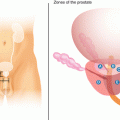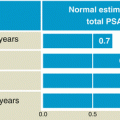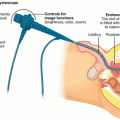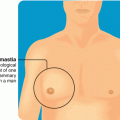Figure 4.1
Number of samples in prostate biopsy
What Should Be Known About the Biopsy Procedure?
The trans-rectal ultrasound and prostate biopsy is a procedure that can be somewhat uncomfortable for the patient, first because of worry about the possibility of cancer; then due to the need to use an unusual means of access, by way of the rectum; and, finally, because of the potential risks of the procedure. Even with all of this, it must be understood that this diagnostic procedure is always carried out taking all of the measures to reduce the risk of complications and that it is the only way to obtain an early diagnosis of prostate cancer.
What Should Be Done Before the Biopsy?
1.
Stop use of aspirin and anticoagulants 7–10 days before the biopsy.
2.
Eat a light meal the night before the biopsy and have no breakfast or liquids on the day of the biopsy.
3.
In the morning, attempt a spontaneous bowel movement and immediately thereafter administer a rectal enema to complete the emptying and cleansing of the rectum so that the procedure will be safer.
4.
Begin taking antibiotics the day before the biopsy and continue for a total of 3 days, including the day of the biopsy.
How Is the Procedure Performed?
The only way to definitively diagnose prostate cancer is by examining a sample of that tissue under the microscope. In these cases a biopsy is performed, using the ultrasound device. As mentioned earlier, in this procedure a needle is inserted in equidistant areas of the prostate.
The prostate is divided into various zones; the most external, or peripheral, is where cancer is found most frequently and, therefore, is the area most focused on when taking the biopsy. The ultrasound makes it possible to scan the entire prostate gland and guarantee that tissue is taken from all of the regions. In the past it was thought that ultrasound could help distinguish cancerous areas from the noncancerous; however, ultrasound can only approximate and direct the needle to each of the different areas for sampling and offer a greater possibility of finding the affected region. There will be occasions when, despite the experience of the urologist, samples are taken of non-cancerous tissue, though cancer is present in the prostate (Fig. 4.2).


Figure 4.2
Sextant method
The needle, by means of the ultrasound, will extract fragments that will then be preserved in formalin to be examined later by the pathologist. The pathologist prepares the final report of the findings. These fragments are of a cylindrical shape and each measures approximately 0.4 mm in width by 12–15 mm in length. On the basis of the examination of each one, the pathologist will report the number of cylinders that are positive for cancer and the percentage of tumor they contain. Depending on the results of the biopsy, the urologist can project the course of the illness and plan the most appropriate treatment.
Shortcomings of ultrasound-guided prostate biopsy
During the PSA era, general management of prostate cancers may have over-diagnosed and over-treated clinically un-important cancer, and misdiagnosed and under-treated clinically important cancer. Now as a standard, trans-rectal ultrasound (TRUS) image guidance is used worldwide at the time of biopsy. However, TRUS is used as a general guide to insert the needle into the prostate organ and take random tissue samples without experienced efforts to specifically target suspicious areas for cancer within the prostate.
Currently in general practice prostate biopsies are typically performed in a random “image-blind” fashion, as described above. Since the clinician dose not know where exactly the cancer is, the image-blinded, random nature of general biopsy may result in missing the location of clinically important cancer.
Novel technologies for precise “image-guided targeted biopsy” now exist. The following innovative techniques are available only in highly specialized centers in the world. They include:
Doppler ultrasound: Cancerous lesions likely have neo-vasculature that feeds the cancer cells. Doppler ultrasound study can demonstrate the increased blood flow in the cancer lesion. Doppler signals represent the movement of blood or ultrasound enhancer (contrast agent) in the region of interest. Overlaid image of Doppler study onto the gray-scale ultrasound may enhance the diagnostic accuracy of prostate cancer. Nevertheless, the use of Doppler ultrasound is still controversial in the diagnosis of prostate cancer.
Stay updated, free articles. Join our Telegram channel

Full access? Get Clinical Tree








